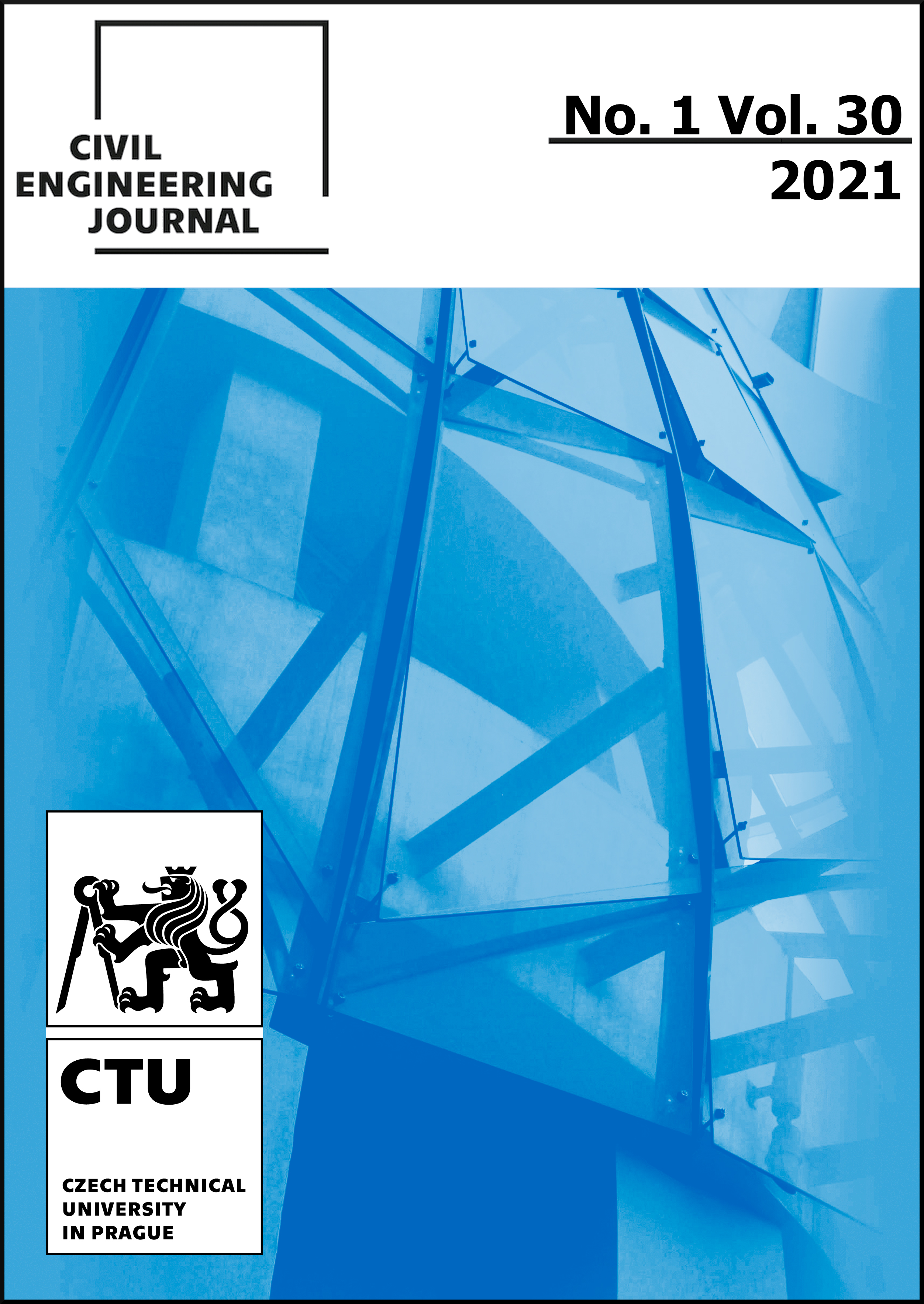ENHANCEMENT OF CONCRETE PIPES THROUGH REINFORCEMENT WITH DISCRETE FIBERS
DOI:
https://doi.org/10.14311/CEJ.2021.01.0010Keywords:
Concrete pipe, Fiber reinforcement, Strength, Ductility, Damage resistance, Experimental evaluation, Analytical modelingAbstract
An industrial-scale production and experimental investigation was conducted in order to evaluate the constructability and structural performance of different concrete pipes incorporating discrete synthetic fibers. The results indicated that synthetic fibers enable design of plain concrete pipes with a desired balance of strength and ductility. Analytical models were developed for predicting the load-carrying capacity of concrete pipes without steel reinforcement that are reinforced with discrete fibers.
Downloads
References
Alexander, M.G. and C. Fourie, 2011. Performance of swere pipe concrete mixtures with Portland and
calcium auminate cements subject to mineral and biogenic acid attack. Materials and Structures, vol 44, no 313-
Ling, A.L., et al., 2015. High-resolution microbial community succession of microbially induced concrete
corrosion in working sanitary manholes. PloS one, vol 10, no 3: p. e0116400.
O’Connell, M., C. McNally and M.G. Richardson, 2010. Biochemical attack on concrete in wastewater
applications: a state of the art review. Cement and Concrete Composites, vol 32, no 7: p. 479-485.
American Society for Testing and Matrials, 1999. Standard Specification for Reinforced Concrete Culvert,
Storm Drain, and Sewer Pipe, American Society for Testing and Materials.
American Concrete Pipe Association, Concrete pipe technology handbook. Irving, TX, 1993.
Watkins, R.K. and L.R. Anderson, 1999. Structural mechanics of buried pipes, CRC press.
Herrmann, H. and J. Schnell, 2019. Short Fiber Reinforced Cementitious Composites and Ceramics,
Springer International Publishing.
Hong, L., Y.D. Chen, T.D. Li, P. Gao and L.Z. Sun, 2020. Microstructure and bonding behavior of fiber
-mortar interface in fiber-reinforced concrete, Construction and Building Materials, vol 232: p. 117235.
Downloads
Published
Issue
Section
License
Copyright (c) 2021 Author

This work is licensed under a Creative Commons Attribution-NonCommercial 4.0 International License.
Authors who publish with this journal agree to the following terms:
- Authors retain copyright and grant the journal right of first publication with the work simultaneously licensed under a Creative Commons Attribution License that allows others to share the work with an acknowledgement of the work's authorship and initial publication in this journal.
- Authors are able to enter into separate, additional contractual arrangements for the non-exclusive distribution of the journal's published version of the work (e.g., post it to an institutional repository or publish it in a book), with an acknowledgement of its initial publication in this journal.
- Authors are permitted and encouraged to post their work online (e.g., in institutional repositories or on their website) prior to and during the submission process, as it can lead to productive exchanges, as well as earlier and greater citation of published work (See The Effect of Open Access).











